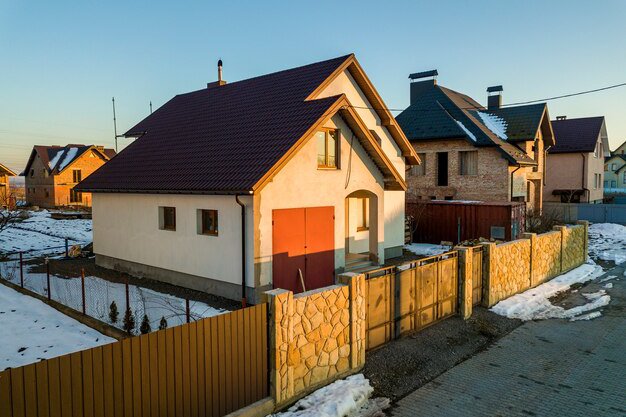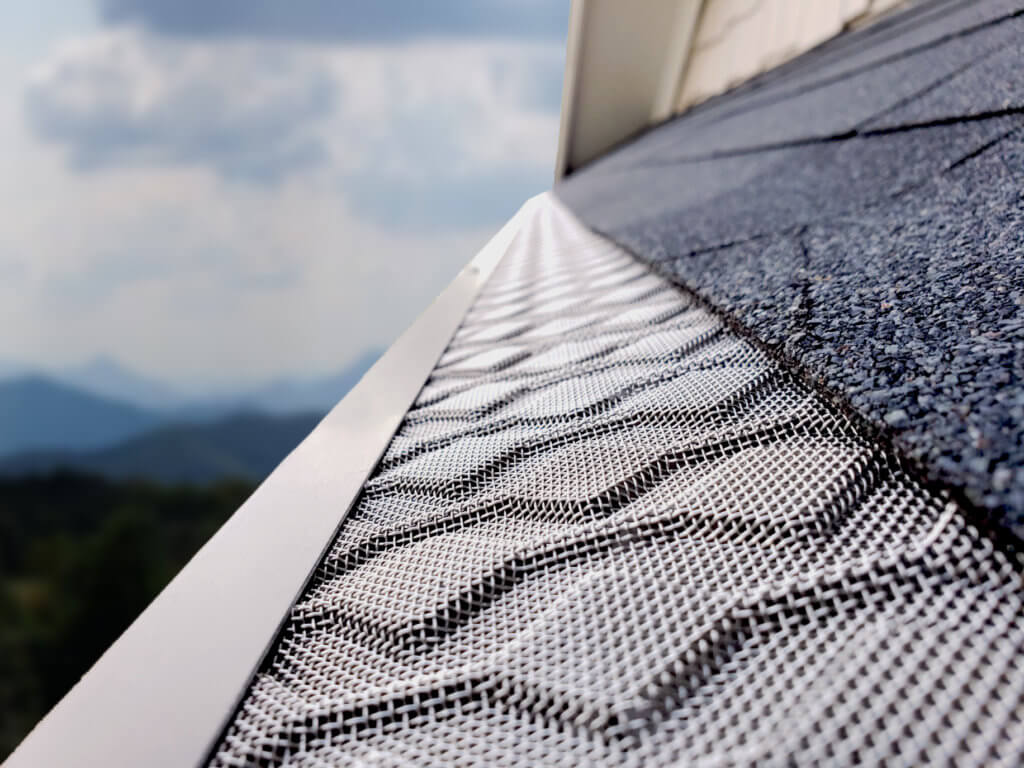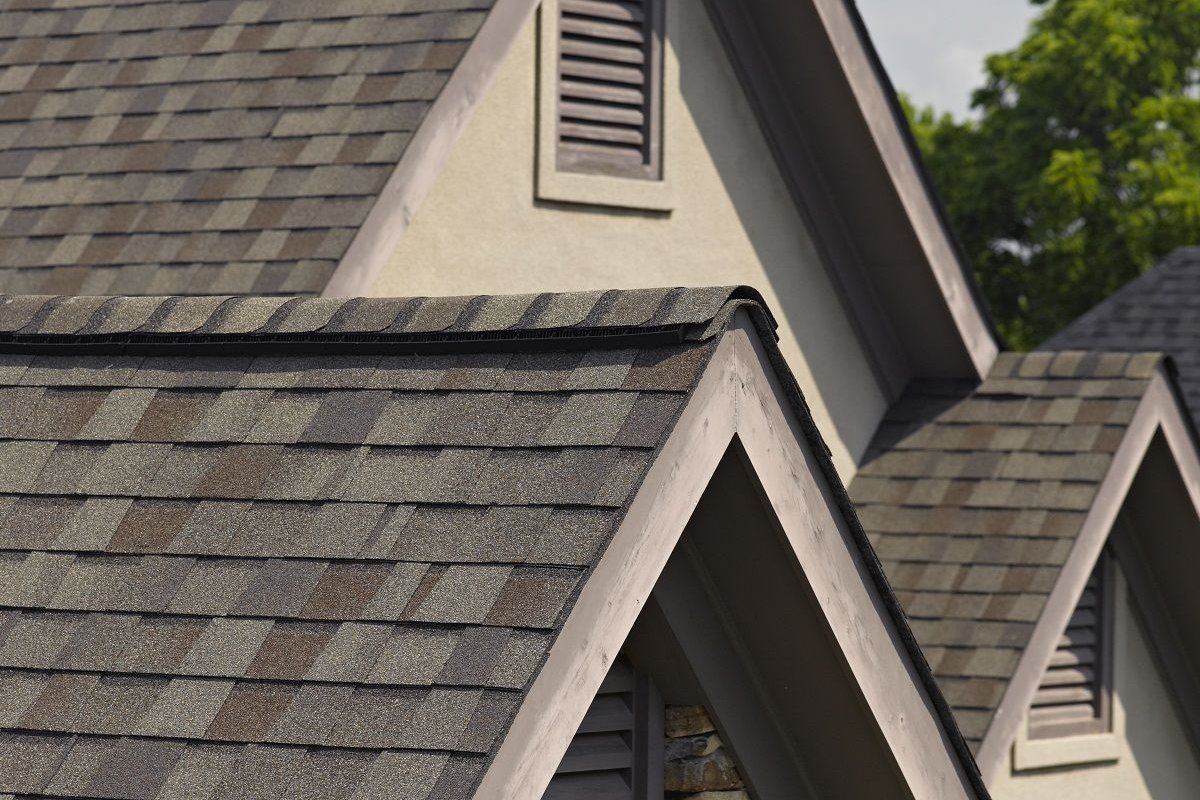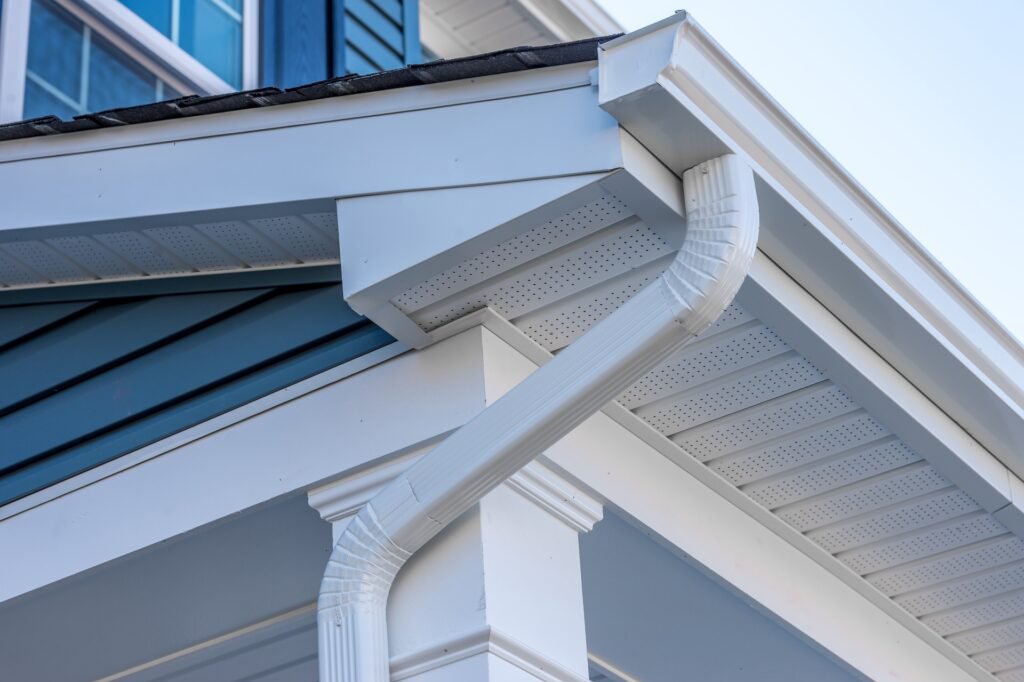Warrenton, Oregon Roofing: Why 3-Tab Shingles Are Fading Out
For decades, the 3-tab asphalt shingle was the standard for residential roofing across North America, including many homes in Warrenton, Oregon. Known for their simple, uniform appearance and relatively low cost, they were a go-to choice for builders and homeowners alike. However, the roofing industry is undergoing a significant shift, with manufacturers increasingly phasing out 3-tab shingles in favor of more advanced options, primarily architectural shingles. This change has important implications for homeowners considering roof repair or replacement in the coming years. Understanding the reasons behind this transition and what the alternatives offer is crucial for making an informed decision about your home's protection and value.
The Rise and Gradual Retirement of 3-Tab Shingles
Three-tab shingles are easily identifiable by their design: a single layer of asphalt and granules cut into three tabs of equal size along the lower edge. When installed, these tabs create a flat, uniform look across the roof. Their simplicity made them economical to produce and install, contributing to their widespread popularity. They served their purpose adequately for many years, providing basic protection against the elements.
However, the roofing landscape has evolved. Homeowners today expect more from their roofing materials, demanding greater durability, longer lifespans, enhanced aesthetic appeal, and better performance against increasingly severe weather. Manufacturers have responded to these demands by investing in research and development, leading to the creation and improvement of alternative shingle types that offer superior performance characteristics. This innovation, coupled with changing building codes and consumer preferences, has made the traditional 3-tab shingle less competitive and, consequently, less profitable for manufacturers to produce on a large scale.
The move away from 3-tab shingles isn't a sudden, universal ban, but rather a gradual market-driven phase-out by major manufacturers. As production scales down and focus shifts to more advanced products, the availability of 3-tab shingles may decrease, and their relative cost-effectiveness might diminish compared to the value offered by alternatives. This is a trend impacting homeowners everywhere, including those in coastal and inland communities around Warrenton, Oregon, where factors like wind and moisture are significant considerations for roof health.
Why Manufacturers Are Saying Goodbye to 3-Tab
Several key factors are driving manufacturers to discontinue 3-tab asphalt shingles. These reasons highlight the inherent limitations of the 3-tab design when compared to modern roofing materials.
Shorter Lifespan and Reduced Durability
One of the primary reasons for the decline of 3-tab shingles is their relatively short lifespan. Typically, 3-tab shingles come with a warranty of 20 to 25 years, but their actual functional life can often be shorter, especially in regions subject to harsh weather. They are more susceptible to damage from wind uplift, hail, and thermal cycling (expansion and contraction due to temperature changes). The single-layer construction offers less material thickness and rigidity, making them prone to cracking, curling, and granule loss as they age. This reduced durability means they often require replacement sooner than alternative options.
Vulnerability to Wind Damage
Wind resistance is a critical factor for any roofing material, particularly in areas prone to strong gusts. Three-tab shingles have a lower wind resistance rating compared to architectural shingles. Their lighter weight and simpler sealant strip make them more vulnerable to lifting and tearing off in high winds. This can lead to immediate leaks and exposes the roof deck to further damage, necessitating urgent repairs or premature replacement.
Aesthetic Limitations
While functional, the flat, uniform look of 3-tab shingles is often perceived as less visually appealing than the dimensional appearance of architectural shingles. Modern homeowners and builders increasingly prefer roofing materials that add depth, texture, and curb appeal to a home. Architectural shingles, designed to mimic the look of natural wood shakes or slate, offer a more premium aesthetic that aligns better with contemporary design trends.
Advancements in Manufacturing Technology
Over the years, manufacturing processes for asphalt shingles have become more sophisticated. This has made it more efficient and cost-effective to produce multi-layered architectural shingles. The initial cost difference between 3-tab and architectural shingles has narrowed significantly, making the superior performance and longevity of architectural shingles a more attractive value proposition for both manufacturers and consumers.
Introducing the Successor: Architectural Shingles
As 3-tab shingles fade out, architectural shingles (also known as dimensional or laminate shingles) have become the new standard for residential roofing. They are constructed differently, offering a host of advantages that address the limitations of their predecessors.
Architectural shingles are made from a heavier, multi-layered base mat saturated with asphalt and coated with ceramic granules. These layers are bonded together in a random pattern, creating a thicker, more robust shingle with a distinctive, dimensional appearance. This layered construction is key to their enhanced performance.
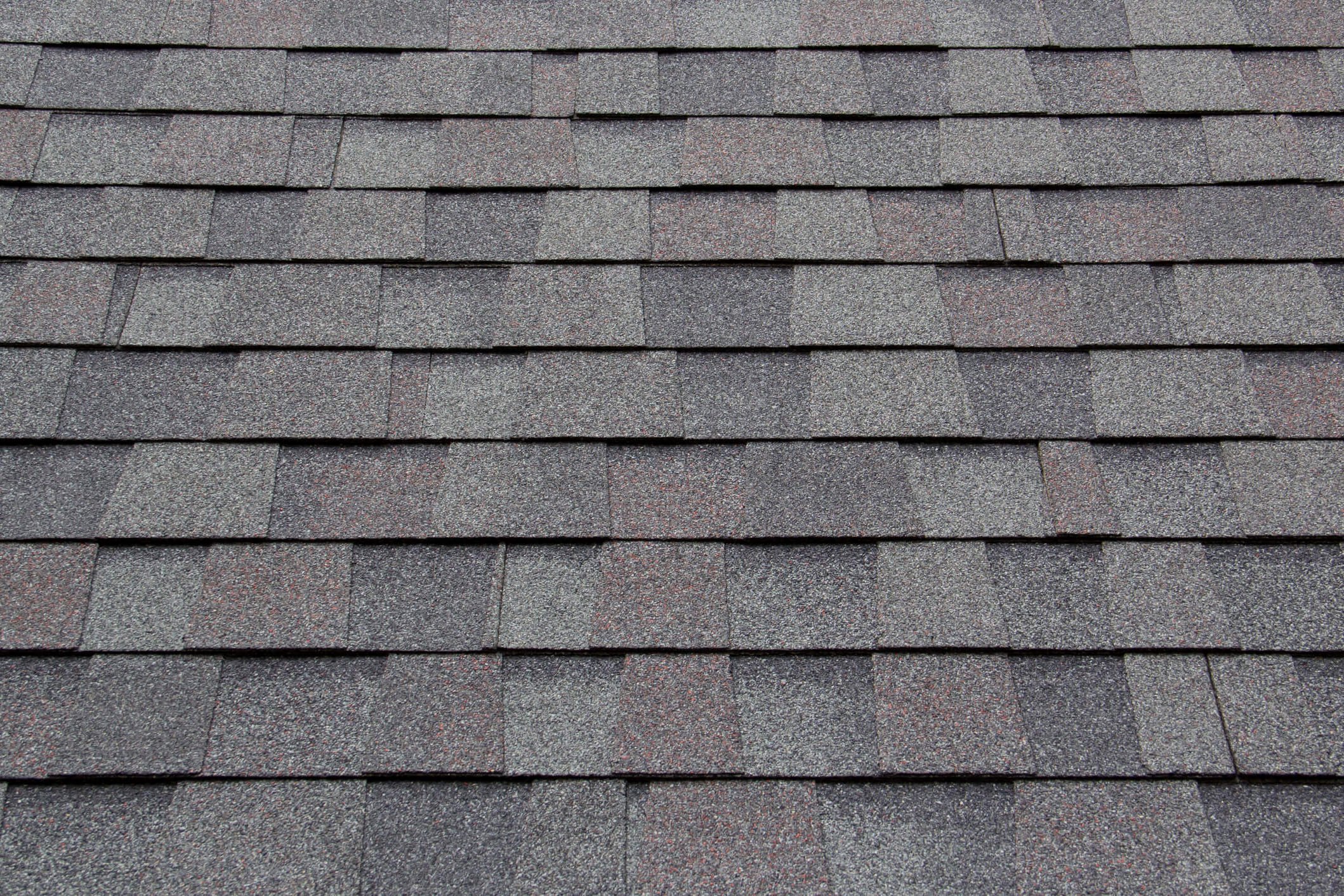
Architectural shingles offer a layered, dimensional look that adds curb appeal.
Superior Durability and Lifespan
The multi-layered structure makes architectural shingles significantly more durable than 3-tab shingles. They are heavier and thicker, providing better resistance to impact damage from hail and debris. Their robust construction also makes them less prone to cracking and curling. Architectural shingles typically come with longer warranties, often ranging from 30 years to lifetime limited warranties, reflecting their expected longer lifespan. This means homeowners can expect their roof to last much longer before needing replacement.
Enhanced Wind Resistance
Architectural shingles boast much higher wind resistance ratings than 3-tab shingles. Their heavier weight and advanced adhesive sealant strips allow them to withstand higher wind speeds, significantly reducing the risk of blow-offs during storms. This is a major benefit for homeowners in areas susceptible to high winds, providing greater peace of mind and protection for the home.
Improved Aesthetics and Curb Appeal
One of the most popular features of architectural shingles is their appearance. The layered design creates variations in thickness and shadow lines, giving the roof a textured, three-dimensional look that can dramatically enhance a home's curb appeal. They are available in a wider range of colors and styles, some designed to convincingly mimic the look of natural materials like wood shakes or slate, but without the maintenance requirements or cost associated with those materials.
Better Warranty Coverage
Manufacturers offer more comprehensive and longer-lasting warranties for architectural shingles compared to 3-tab. These warranties often include stronger wind resistance coverage and longer periods for material defects, providing homeowners with greater protection for their investment over the long term.
Comparing 3-Tab and Architectural Shingles: Key Differences
Understanding the core differences between these two shingle types is essential when considering a roof project. Beyond the reasons for the phase-out, these distinctions directly impact performance, cost, and appearance.
| Feature | 3-Tab Shingles | Architectural Shingles |
|---|---|---|
| Construction | Single layer | Multi-layered, laminated |
| Appearance | Flat, uniform | Dimensional, textured, varied |
| Weight | Lighter | Heavier |
| Lifespan | ~15-20 years (functional) | ~25-30+ years (functional) |
| Warranty | Typically 20-25 years | Typically 30 years to Lifetime Limited |
| Wind Resistance | Lower ratings (~60-70 mph) | Higher ratings (~110-130+ mph) |
| Durability | Less resistant to hail, cracking | More resistant to hail, cracking |
| Cost (Material) | Lower upfront | Higher upfront |
| Installation | Simpler, faster | Can be slightly more complex/time |
This comparison highlights why the industry is moving towards architectural shingles. While the upfront material cost is typically higher for architectural shingles, the increased durability, longer lifespan, and better performance against weather often result in a lower cost over the roof's lifetime when factoring in potential repairs and premature replacement of 3-tab shingles.
The Cost Factor: Upfront vs. Long-Term Value
It's true that the initial material cost for architectural shingles is generally higher than for 3-tab shingles. Depending on the specific product and location, architectural shingles might cost 10-20% more per square (100 square feet) than 3-tab. Installation costs can also be slightly higher due to the shingles' weight and the need for precise alignment to achieve the desired dimensional look, though this difference is often minimal for experienced roofers.
However, focusing solely on the upfront cost misses the bigger picture of long-term value. When you consider the extended lifespan of architectural shingles – potentially lasting 10-15 years longer than 3-tab – the cost per year of service becomes significantly lower.
Furthermore, architectural shingles can contribute to lower costs in other ways:
- Reduced Repair Costs: Their superior durability means they are less likely to be damaged by hail, wind, or debris, leading to fewer repair bills over the roof's life.
- Potential Insurance Benefits: Some insurance companies may offer discounts or more favorable terms for homes with more durable roofing materials like architectural shingles, especially those with high impact resistance ratings.
- Increased Home Value: The enhanced curb appeal and perceived quality of architectural shingles can increase your home's market value, offering a return on investment when you sell.
When planning a roof replacement, it's essential to look beyond the initial price tag and consider the total cost of ownership over the roof's expected lifespan. While a 3-tab roof might be cheaper today, replacing it sooner and potentially dealing with more repairs could make it more expensive in the long run.
Considering a roof replacement in Warrenton or need to budget for future projects? Get a quick, hassle-free estimate.
Get your free instant roof estimate
Installation and Underlayment Considerations
Proper installation is paramount for the performance and longevity of any shingle roof, regardless of type. Both 3-tab and architectural shingles require a solid roof deck, proper underlayment, flashing around penetrations (like chimneys and vents), and adequate ventilation.
Underlayment is a layer of material installed directly onto the roof deck before the shingles. It provides an added layer of protection against water penetration if wind-driven rain gets under the shingles or if shingles are damaged. Common types include asphalt-saturated felt paper and synthetic underlayments, which offer superior tear resistance and water protection. Ice and water shield, a self-adhering waterproof membrane, is often installed in valleys, around chimneys, and along eaves, particularly in climates where ice damming is a risk. Even in areas like Warrenton, Oregon, where ice dams are less common than colder regions, proper underlayment is vital for managing the significant rainfall.
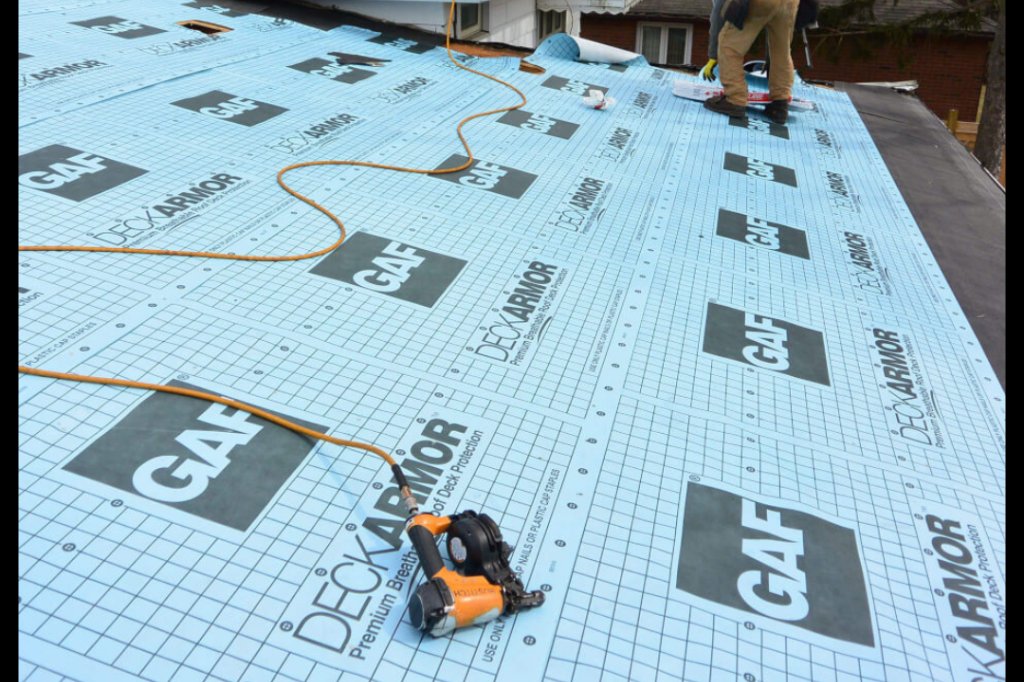
Proper underlayment is a critical layer of defense beneath the shingles.
Architectural shingles, being heavier, may require slightly more careful handling during installation, but the fundamental process is similar to 3-tab shingles: starting from the eaves and working upwards, overlapping courses, and securing shingles with roofing nails. The key difference lies in achieving the staggered pattern that creates the dimensional look. Professional roofers are well-versed in installing both types, ensuring the manufacturer's specifications and local building codes are met.
Ventilation is another critical component often overlooked. Proper attic ventilation helps regulate temperature and moisture levels, preventing the buildup of heat in the summer and moisture in the winter. This helps protect the roof deck from warping and rot and can extend the life of the shingles by preventing excessive heat buildup that can accelerate granule loss and aging. Ridge vents, soffit vents, and other types of roof vents work together to create a flow of air through the attic space.
Maintenance for Asphalt Shingle Roofs
While architectural shingles are more durable, all asphalt shingle roofs require some level of maintenance to perform optimally and reach their expected lifespan. Regular maintenance can help identify potential issues early, preventing costly repairs down the line.
Key maintenance tasks include:
- Gutter Cleaning: Keeping gutters clear of leaves, debris, and shingle granules is essential for proper water drainage. Clogged gutters can cause water to back up under the shingles or pool around the foundation.
- Moss and Algae Control: In damp climates like Warrenton, Oregon, moss and algae growth can be a significant issue. These organisms hold moisture against the shingles, accelerating deterioration and granule loss. While some shingles have algae-resistant granules (AR), regular cleaning or treatment might be necessary. Using zinc strips or specific roofing cleaners (applied correctly to avoid damaging shingles) can help.
- Regular Inspections: Periodically inspect your roof from the ground or with binoculars. Look for missing, cracked, or curled shingles, excessive granule loss, damaged flashing, or signs of leaks inside the attic or on interior ceilings. After severe storms, a visual check is highly recommended.
- Tree Trimming: Trim branches overhanging the roof to prevent damage from falling limbs, reduce leaf and debris accumulation, and minimize shading that can promote moss growth.
Addressing minor issues promptly, such as replacing a few damaged shingles or clearing a blocked downspout, can prevent them from escalating into major problems requiring extensive repairs or premature roof replacement.
When is it Time for a New Roof?
Knowing when your roof is nearing the end of its life is crucial for proactive replacement, preventing leaks and damage to the rest of your home. Signs that indicate a roof replacement may be necessary include:
- Age: If your 3-tab roof is approaching or exceeding 20 years old, or your architectural shingle roof is nearing 25-30 years, it's time to start planning for replacement, even if there are no obvious signs of failure.
- Missing or Damaged Shingles: Shingles that are missing, cracked, curled, or buckling are clear indicators of wear and potential entry points for water.
- Excessive Granule Loss: Asphalt shingle granules protect the asphalt layer from UV rays. If you notice large amounts of granules in your gutters or downspouts, it means the shingles are losing their protective coating and nearing the end of their service life.
- Leaks or Water Stains: Water stains on interior ceilings or walls, or visible leaks in the attic, are definitive signs of a roof failure that requires immediate attention.
- Sagging Roof Deck: A sagging roof deck is a serious structural issue that indicates the deck is weakened, likely from moisture damage.
- Moss or Algae Growth: While treatable, extensive moss or algae can indicate that the shingles are retaining too much moisture, accelerating their deterioration.
- Neighbors' Roofs: If many roofs in your neighborhood, built around the same time as yours, are being replaced, your roof may also be nearing the end of its expected life.
Addressing roofing issues proactively is always better than waiting for a leak to occur. A failing roof can lead to significant damage to insulation, drywall, structural components, and even foundation issues.
If you're experiencing an active leak, recent storm damage, or notice any signs that require immediate professional inspection, don't delay.
Book a roofing appointment
Choosing the Right Shingle Type for Your Home
With 3-tab shingles becoming less common, the choice for most homeowners considering asphalt roofing will likely be between different lines and styles of architectural shingles. Factors to consider include:
- Durability Requirements: Consider your local climate. If your area experiences high winds, heavy rain, or potential for hail, investing in architectural shingles with higher wind and impact resistance ratings is a wise choice.
- Aesthetic Preferences: Architectural shingles come in various styles and colors. Look at different options to see what complements your home's architectural style and your personal taste. Consider how the roof color will affect your home's energy efficiency (lighter colors reflect more heat).
- Budget: While architectural shingles have a higher upfront cost, factor in the long-term savings from extended lifespan and reduced repairs. Determine what fits your budget while providing adequate protection and value.
- Warranty: Compare warranty options offered by different manufacturers and shingle lines. Pay attention to the length of the warranty, what it covers (materials, labor, wind damage), and whether it's transferable.
- Manufacturer Reputation: Choose shingles from reputable manufacturers known for quality and consistency.
Consulting with a qualified local roofing professional can provide invaluable guidance tailored to your specific home, budget, and the climate conditions in Warrenton, Oregon. They can assess your current roof, recommend appropriate architectural shingle options, and provide an accurate estimate for the project.
Finding a Qualified Roofer
Once you've decided on the type of shingle and determined that it's time for a new roof or significant repair, the next critical step is finding a reliable and qualified roofing contractor. This is a decision that shouldn't be rushed.
When seeking a roofer, consider the following:
- Experience: Look for contractors with extensive experience installing the type of shingles you've chosen, particularly architectural shingles.
- Licensing and Insurance: Ensure the contractor is properly licensed and insured. This protects you from liability in case of accidents on your property.
- References and Reviews: Ask for references from past clients and check online reviews to gauge their reputation and the quality of their work.
- Warranties: Understand the warranties offered – both the manufacturer's warranty on the materials and the contractor's warranty on their workmanship.
- Detailed Estimate: Get a comprehensive written estimate that breaks down all costs, including materials, labor, permit fees, and debris disposal. Be wary of significantly low bids, which might indicate shortcuts or hidden costs.
- Communication: Choose a contractor who communicates clearly and promptly, answering your questions and keeping you informed throughout the process.
Finding the right contractor ensures your new roof is installed correctly, providing maximum protection and longevity for your home.
Ready to connect with pre-vetted local roofing professionals? Streamline the process and find qualified contractors.
Book a roofing appointment
Planning Your Roof Project
Replacing a roof is a significant home improvement project that requires careful planning. Taking the time to prepare will help ensure a smooth process and a successful outcome.
- Assess Your Needs: Determine if you need a full replacement or just repairs. Identify any specific issues like leaks, damage, or age-related wear.
- Research Shingle Options: Familiarize yourself with architectural shingle types, styles, colors, and warranties available.
- Set a Budget: Determine how much you are willing to spend. Remember to factor in both material and labor costs, as well as potential unforeseen issues like damaged roof decking.
- Get Estimates: Obtain detailed estimates from several qualified roofing contractors. Compare not just the price but also the materials specified, the scope of work, and the warranty offered.
- Understand the Contract: Read the contract carefully before signing. Ensure it includes all agreed-upon details, payment schedule, project timeline, and warranty information.
- Prepare Your Home: Before installation begins, trim back vegetation, remove fragile items from walls and shelves inside your home (vibrations can cause them to fall), and secure pets. Discuss access and staging areas with your contractor.
Planning ahead allows you to make informed decisions, secure financing if needed, and schedule the work at a convenient time, ideally during favorable weather conditions.
Whether you're planning a replacement or just curious about costs in your area, get a preliminary estimate quickly and easily.
Get your free instant roof estimate
Investing in Your Home's Future
The phase-out of 3-tab asphalt shingles marks a positive evolution in residential roofing. While it means saying goodbye to a long-standing standard, it ushers in architectural shingles as the new norm, offering superior performance, durability, and aesthetic appeal. For homeowners in Warrenton, Oregon, this shift means that future roof replacements will likely involve choosing from a wider array of high-quality, long-lasting architectural options designed to better withstand the local climate and protect their investment for decades to come. Understanding these changes and planning accordingly ensures your home remains safe, secure, and beautiful.
